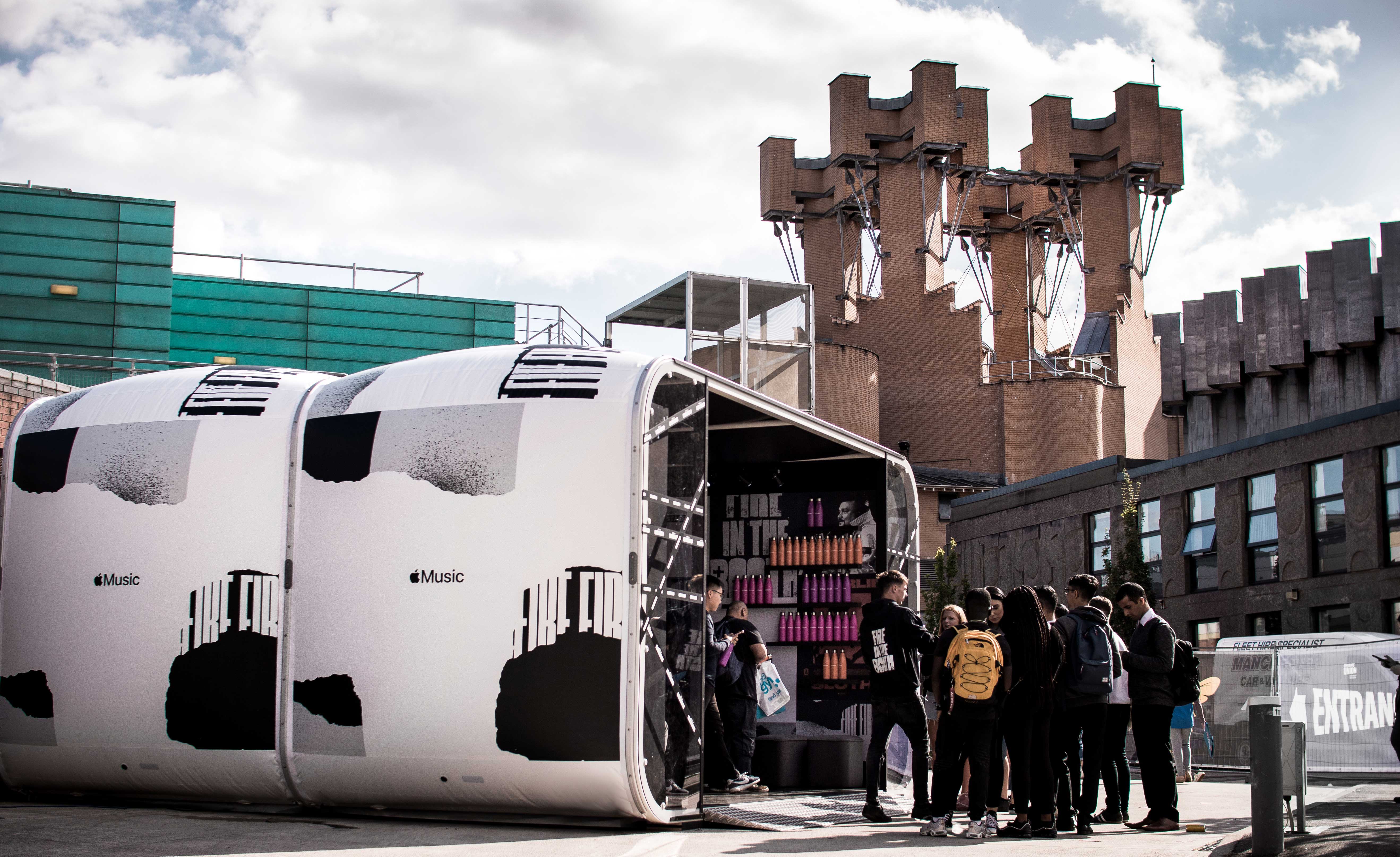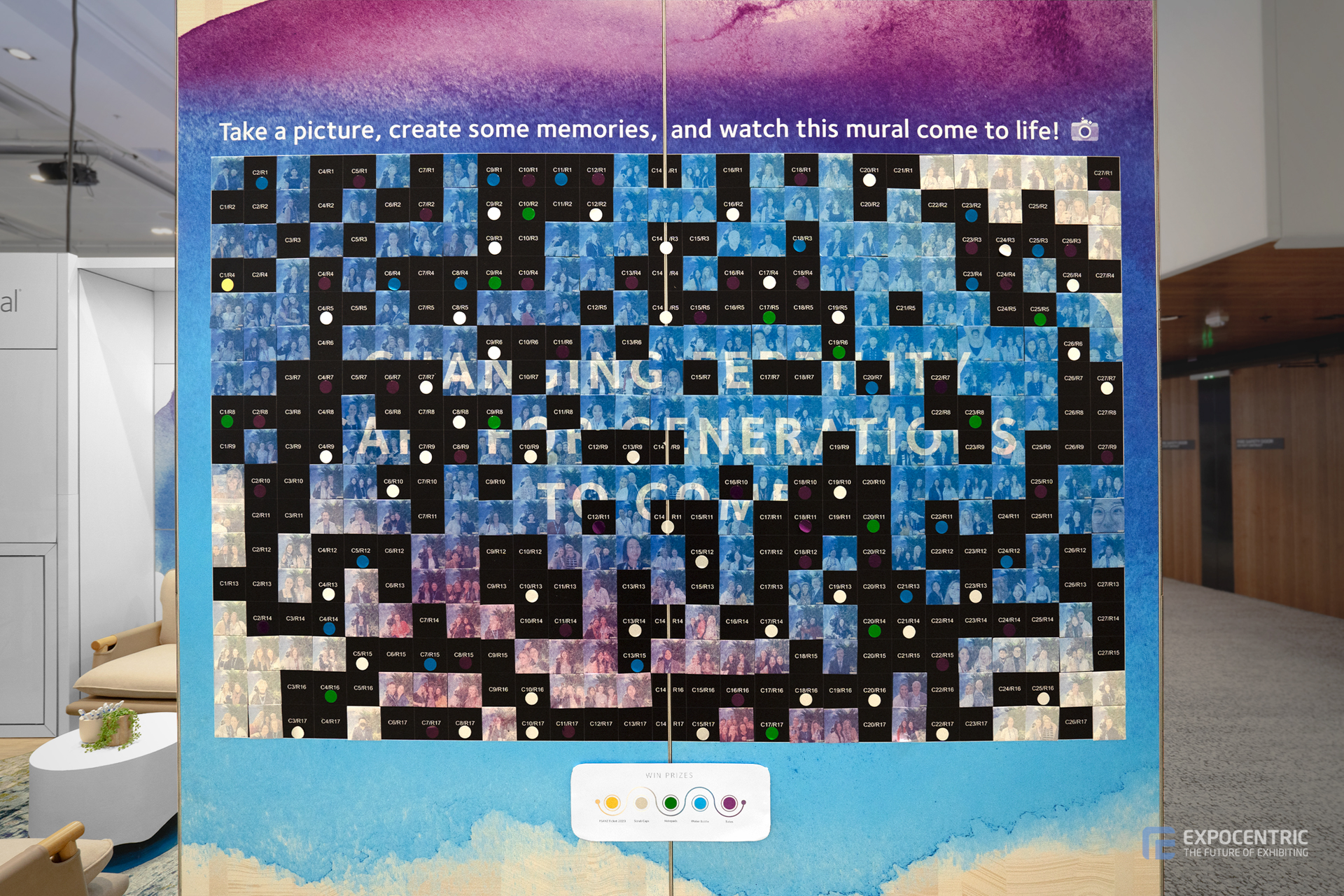Continuing where we left off from Part 1, the principles below will help you craft a powerful story which you can use for your content marketing strategy that will highlight you, or your customers as the story’s central character. Let’s move forward and examine how these guidelines can be implemented in your event marketing and overall marketing strategy, suitable for both B2B and B2C frameworks. Select the principles mentioned here that are relevant to your company.
Stories Inspire Action
What audience response can you expect when using storytelling in marketing campaigns?
Capturing the Audience’s Attention:
We will focus on storytelling’s application for campaigns like events, trade show networking, brand activations, and other applicable marketing channels. If competition for the audience’s attention is fierce, compelling brand stories stand out. Narratives, rooted in a brand’s history and core values are known to magnetise and draw in the target audience. Your brand’s story must unfold to capture the interest of like-minded consumers.



Crafting Unforgettable Narratives:
A great brand story is more than just a sequence of events; it follows the hero’s journey, where the brand itself becomes the central character. The narrative unfolds, engaging the audience emotionally and establishing a profound connection. Examples of powerful brand stories become benchmarks for others, showcasing the art of creating stories that resonate at a deeper level.
Inspiring Brand Loyalty:
Brand loyalty is cultivated through authentic storytelling. By delving into the brand’s mission and purpose, trade show attendees connect with more than just a product or service – they connect with the human beings and values behind the brand. This emotional journey becomes absolutely essential in inspiring long-term commitment from the target customer.
Creating Suspense and Engagement:
Effective marketing efforts within trade shows rely on creating suspense and engagement. Successful brands who value storytelling strategies strategically unveil key elements of their narrative, keeping prospective customers eagerly awaiting the next chapter. This art of storytelling not only drives sales but also establishes a memorable and unique brand presence.


Your Brand’s Purpose Resonating with the Target Audience:
This purpose-driven narrative resonates with the audience’s personal values, fostering emotional connections that extend well after your event. The brand’s purpose takes centre stage, transcending the mere existence of the business. Origin stories unfold, revealing the main character – the brand – and its journey.
Empowering Like-Minded Consumers:
Brand stories serve as beacons for like-minded consumers, attracting those who align with the brand’s values and mission. Through social media posts and educational content, brands not only inform but also empower their audience, creating a community of individuals who share a deeper understanding of the brand’s purpose.
As an attractive tool, this educational content becomes a strategic asset:
In trade shows, educational content becomes a strategic tool for storytelling. Whether through multimedia infomercials, workshops or seminars, brands disseminate good stories that provide valuable insights, transcending traditional marketing messages, and keeping your audiences glued to the ideas you presented through storytelling. This deeper level of engagement ensures that the brand’s narrative remains etched in the minds of new customers.


The Customer, as the Hero of your Brand Story
Positioning the customer as the hero of a brand story is a powerful narrative strategy that resonates with contemporary marketing approaches. This customer-centric approach places the individual at the forefront, transforming them from a passive consumer to an active protagonist in the brand’s narrative.
Crafting the Customer’s Journey:
In the customer-centric approach, the emphasis is on detailing the customer’s experience. It’s about identifying their requirements, obstacles, and goals, and demonstrating how the brand significantly aids them in their day-to-day quest. Every interaction forms a part of the customer’s experience, building an engaging and understandable narrative.
Identifying with the Customer’s Struggles:
The hero’s journey typically involves overcoming obstacles, and the customer is no exception. Brands that position the customer as the hero empathise with their struggles. This involves acknowledging pain points, addressing challenges, and demonstrating how the brand’s products or services act as transformative tools, aiding the customer on their journey.
Celebrating Achievements and Successes:
As the hero achieves milestones or successes, the brand celebrates these moments. Whether it’s through personalised communications, recognition, or exclusive offers, the customer’s victories become an integral part of the brand narrative. This not only fosters a sense of accomplishment but also strengthens the emotional connection between the customer and the brand.


Showcasing Transformation and Growth:
A key element of the hero’s journey is transformation. Brands that position customers as heroes highlight the transformative impact of their products or services. This could be in terms of personal development, lifestyle enhancement, or overcoming challenges. The brand becomes a catalyst for positive change, and the customer’s growth story becomes synonymous with the brand’s success.
Enabling Personalisation and Individuality:
By placing the customer as the hero, brands acknowledge and embrace individuality. Personalised experiences, tailored solutions, and a deep understanding of the customer’s unique needs and preferences contribute to a narrative that underscores the brand’s commitment to the individual journey of each customer.
Encouraging User-Generated Content:
Encouraging user-generated content empowers customers, a potent expression of the customer-as-hero narrative. Brands actively urge customers to share daily experiences with their product/service on social media. Offering incentives can further drive this engagement. These stories, serving as evidence and featured in multimedia infomercials, extend beyond online platforms. Displaying them prominently during events or printing on stalls turns customers into co-creators, amplifying the narrative and fostering a community.



Building Emotional Connections:
Positioning the customer as the hero is a strategic move to build emotional connections. By acknowledging the customer’s role in the brand’s story, a deeper level of engagement is established. Customers who feel seen, heard, and valued are more likely to develop a strong emotional bond with the brand, fostering brand loyalty and advocacy.
Implementing Customer-Centric Strategies:
Beyond storytelling, a customer-as-hero approach necessitates operational and strategic alignment. Brands must implement customer-centric strategies, ensuring that every aspect of the customer journey reflects the hero narrative. This involves streamlined customer service, personalised communication, and continuous efforts to enhance the overall customer experience.
Develop the Hero’s Goal or Journey
In advertising and marketing campaigns, crafting a hero character’s goal or journey follows a narrative structure that captivates and resonates with the target audience. While not rigid, a simplified formula can be adapted to suit the concise and impactful nature of storytelling. Here’s a streamlined guide:
Introduction to the Hero:
- Present the relatable protagonist, often the target customer, facing a challenge or in a relatable scenario.
Establish the Goal/ Inject the Brand’s Purpose:
- Clearly define the hero’s goal or desired outcome. This should align with the product or service being advertised, highlighting how it addresses a specific need or problem.
Conflict or Challenge:
- Introduce a conflict or challenge that obstructs the hero’s path to achieving the goal. This challenge should emphasize the pain points or obstacles that the target audience may face.
Solution Introduction:
- Introduce the advertised product or service as the solution to the hero’s challenge. Highlight its unique features or benefits that directly address the hero’s needs.
Transformation or Benefits Showcase:
- Illustrate the positive transformation or benefits that the hero experiences by using the product or service. Show how it resolves the challenge and contributes to achieving the goal.
Emotional Connection:
- Establish an emotional connection by emphasising the positive emotions associated with overcoming challenges and achieving the goal with the help of the advertised solution.
Call to Action:
- Encourage the audience to take action. This could involve making a purchase, signing up, or engaging with the brand in a meaningful way. Clearly communicate what steps the audience should take.
Resolution and Closing:
- Showcase the hero achieving the goal, resolving the initial challenge, and experiencing a positive outcome. Conclude with a strong and memorable closing message that reinforces the brand’s value.

Tips for Effective Marketing Brand Storytelling:
- Keep it concise: Given the limited time and attention span in advertising, ensure that the storytelling is concise and to the point.
- Visual brand storytelling: Use compelling visuals and audio elements to enhance the storytelling experience.
- Know your brand’s audience: Tailor the story to resonate with the specific emotions, interests, and aspirations of your target audience.
- Focus on brand benefits: Highlight the tangible benefits and outcomes associated with the product or service to appeal to the audience’s needs.



Write a Story, not a List of Facts
The purpose of using this strategy isn’t to compile and broadcast dry facts, but to unleash the potency of a compelling story that would attract target markets. If we pay close attention, we will see that successful brands are creating and using narratives in their marketing, advertising, and events. Their campaigns yielded substantial returns, prompting them to annually devise storytelling campaigns aligned with their marketing plan for each year. They also have a pattern… they’re using compelling stories, great brand narratives, and powerful sagas so they can evoke emotions.
Brands that have become key players in their respective markets have crafted purposeful, value-oriented stories and personas. These are driving sales and making a lasting impression because they connect well with consumers.
Visual Storytelling for Brands at Events
The principles for visual storytelling at retail activations, events and exhibition trade shows involve strategically integrating brand values and standing into the narrative-driven design:
Cohesive Branding:
- Maintain a consistent visual identity aligned with brand values, logos, and design elements.
Narrative-driven Design:
- Design event booths and displays that tell a compelling brand story.
Interactive Storytelling:
- Incorporate interactive elements that engage attendees and reflect brand values.
Sequenced Visuals:
- Structure visual storytelling with a series of visuals unfolding progressively.
Strategic Use of Video:
- Utilise video content strategically to convey the brand’s mission and values.
User-generated Content Integration:
- Encourage attendees to contribute to the brand’s visual narrative through social media.
Visual Merchandising Mastery:
- Apply visual merchandising principles to showcase products effectively.
Branded Visual Giveaways:
- Create visually appealing giveaways aligned with the brand’s values.
Themed Photo Opportunities:
- Design photo-friendly spaces with themed backdrops that align with the brand narrative.
Metrics for Evaluation:
- Establish measurable metrics, such as engagement levels and booth traffic, for evaluation.
Adaptability and Innovation:
- Stay adaptable and embrace innovation to keep the visual storytelling experience fresh.
What Makes Brand Storytelling So Powerful?
Emotional Connection:
- What a Brand Stands for: Successful brand storytelling goes beyond mere facts; it articulates what the brand stands for, fostering a profound emotional connection with the audience.
- Create Stories: By continuously creating stories aligned with brand values, companies evoke emotions that resonate with consumers, establishing a deep connection.
- Authentic Stories: Authenticity in storytelling enhances emotional bonds, as consumers appreciate and connect with genuine narratives that reflect the brand’s values.



Memory Retention:
- Great Brand Stories: The power of great brand stories lies in their ability to leave a lasting imprint on memory, ensuring that consumers remember the narrative long after exposure.
- Powerful Brand Story: Crafting a powerful brand story enhances memory retention, making the brand narrative more memorable and influential over time. Increased Engagement:
- Marketing Team: A cohesive marketing team is essential for executing brand storytelling effectively, ensuring that the narrative resonates with the audience and drives increased engagement.
- Company’s Vision: Aligning brand storytelling with the company’s vision contributes to increased engagement, as audiences are drawn to narratives that inspire and align with broader goals.
Consumer Trust:
- Company’s Values: Highlighting company values within brand storytelling builds trust, as consumers appreciate brands that authentically communicate their values.
- Excellent Example: Incorporating an excellent example in the brand narrative demonstrates transparency, reinforcing trust by showcasing real instances that align with stated values.
Differentiation in the Market:
- Other Brand: Brand storytelling distinguishes one brand from another, allowing companies to carve a unique identity in the market by showcasing narratives that set them apart.
- Review Sites: The impact of brand storytelling is often reflected on review sites, where consumers share their unique experiences, further differentiating the brand.


Impact on Purchase Decisions:
- Drive Sales: The ultimate goal of brand storytelling is to drive sales by creating narratives that resonate emotionally, influencing consumers to choose the brand over competitors.
- Target Market: Understanding the target market is crucial in creating brand stories that specifically appeal to the audience’s preferences and needs, ultimately impacting purchase decisions.
Social Media Performance:
- Social Media Channels: Leveraging various social media channels is integral for brand storytelling’s success, as it maximizes visibility and facilitates the sharing of compelling narratives.
- Social Media Campaigns: Well-executed social media campaigns amplify the reach of brand storytelling, creating a ripple effect as audiences share and engage with the narrative.
Brand Recall:
- Brand Exists: Brand storytelling goes beyond the acknowledgment of brand existence; it transforms the brand into a memorable entity with a narrative that enhances brand recall.
- Company’s Story: Narrating the company’s story contributes to brand recall, as consumers remember the journey and milestones that form an integral part of the brand narrative.
Increased Customer Retention:
- Business Exists: Brand storytelling transforms the concept of a business merely existing; it becomes a dynamic force that fosters a connection, leading to increased customer retention.
- Brand Loyalty: Engaged customers, connected through brand stories, are more likely to exhibit brand loyalty, contributing to sustained customer retention over time.


Positive Brand Perception:
- Company’s History: A positive brand perception is influenced by the company’s history, which, when integrated into brand storytelling, showcases growth, resilience, and adaptability.
- Create Suspense: Introducing elements of suspense in brand storytelling adds intrigue, capturing the audience’s attention and contributing to a positive perception of the brand.
Impact on Company Reputation:
- Company’s Values: The alignment of brand storytelling with the company’s values positively impacts the brand’s reputation, fostering a perception of social responsibility and customer-centricity.
- Create Stories: Consistently creating stories that align with positive values contributes to a favourable company reputation, reinforcing the brand’s commitment to ethical practices.
Effective Communication:
- Origin Story: The brand’s origin story is a vital component of effective communication through storytelling, providing context and depth that resonates with diverse audiences.
- Marketing Messages: Crafting marketing messages within the brand narrative ensures effective communication, as the narrative becomes a conduit for conveying complex messages in a relatable manner.
B2B Example which evolved into a B2C campaign
Cisco Defends Its Realm

B2B Campaign Overview
- This was a campaign by Cisco Systems Inc. for the RSA Conference in 2009.
- Despite a reduced budget and booth space, the campaign aimed to generate interest and attract prospects.
Campaign purpose and storyline:
The idea was to align superheroes with the characteristics of the product that each represented. The character Trace fought to protect Synocorp’s e-mail systems, showing the ability to react quickly as e-mail filters would. Another character named Wall was large and strong, like a good network firewall.
Campaign Elements
- The campaign involved a microsite called “The Realm” and used superheroes to represent different aspects of Cisco’s products.
- Cisco collaborated with cartoonist Mike Mayhew to create these superheroes.
Campaign Success
- The content was introduced to the tradeshow attendees through multimedia devices in the booth. Continued promotion was done post-event through online channels and advertising.
- The campaign successfully generated over 38,200 clickthroughs to its microsite, two-thirds of which were first-time visitors to Cisco’s website.


The Realm’s B2C Evolution
- In recent years, “The Realm” has evolved into a dedicated Cisco game server that Riot Games uses exclusively for pro-level competitive matches at major global events.
- This server creates a near-zero-ping environment, ensuring equitable and fair play for all participants.
Fan Experience
- The Realm was unveiled to fans for the first time during the Worlds Fan Fest held at the Chase Center.
- This allowed fans to play on the exact PC specs of the pros and experience the ultra-fast, responsive gameplay made possible by the Cisco network.

Summary: Why is brand storytelling important?
In the rich tapestry of diverse brands showcased at trade shows, a skilled brand storyteller artfully weaves a narrative that not only stands out but also resonates emotionally, compelling action from the captivated audience. Through powerful brand stories, a brand not only exists in the bustling and crowded marketplace but also thrives, leaving an indelible mark on the hearts and minds of its audience. As we explore brand storytelling examples in this dynamic arena, it becomes evident that a compelling brand story serves as the guiding beacon that propels the brand towards lasting success and establishes a genuine connection with its target audience. In the midst of fierce competition for attention, these narratives become powerful tools, ensuring that a brand not only captures the spotlight but also leaves a lasting imprint in the memories of potential customers.
Let us make you a compelling brand storytelling for your events and marketing campaigns! As a full-service marketing agency, we’re here to tailor solutions to meet your unique needs, whether they’re specific or diverse. Ready to transform your marketing strategy?
